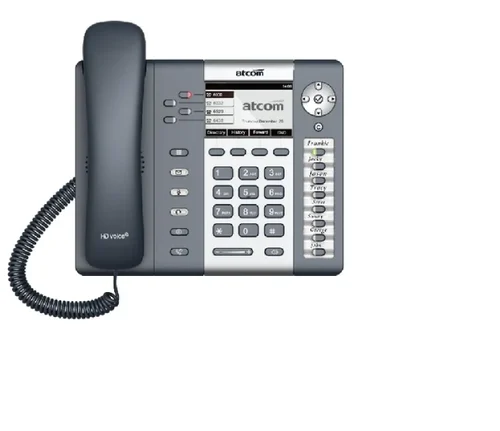Lan Telephone Access control work
Lan telephone access control work in Pune,Mumbai, Thane, Navi Mumbai, Maharashtra, Aurangabad and Nagpur

LAN, Telephone System, and Access Control Installation in Pune, Mumbai, Thane, Navi Mumbai, Aurangabad, Nagpur, and Across Maharashtra
Local Area Network (LAN) Installation
A Local Area Network (LAN) installation in Pune, Mumbai, Thane, Navi Mumbai, Aurangabad, Nagpur, and across Maharashtra enables seamless connectivity between computers and devices within a specific area, such as an office, school, or business facility.
Key Components of LAN Installation
- Network Cables – Ethernet cables (Cat5e, Cat6) for reliable wired connectivity.
- Network Switches – Devices that connect multiple computers and enable communication within the LAN.
- Routers – Manage traffic between the LAN and the internet.
- Network Interface Cards (NICs) – Allow computers and devices to connect to the network.
- Wireless Access Points (WAPs) – Provide Wi-Fi access across the network.
Steps in LAN Installation in Pune, Mumbai, Thane, Navi Mumbai, Aurangabad, Nagpur, and Across Maharashtra
- Planning and Design – Assess network requirements, bandwidth, and layout.
- Cabling – Laying network cables, installing cable management systems, and connecting switches.
- Device Installation – Installing and configuring switches, routers, and access points.
- Configuration – Setting up IP addresses, security protocols (firewalls, encryption).
- Testing – Verifying connectivity, performance, and network security.
Telephone System Installation
A telephone system installation in Pune, Mumbai, Thane, Navi Mumbai, Aurangabad, Nagpur, and across Maharashtra is crucial for businesses to facilitate smooth internal and external communication. This includes both traditional analog systems and modern VoIP (Voice over Internet Protocol) systems.
Key Components of a Telephone System
- Telephone Lines – Traditional copper lines for analog systems or internet-based VoIP lines.
- PBX (Private Branch Exchange) – Manages internal and external calls.
- Handsets and Headsets – Devices for making and receiving calls.
- VoIP Phones and Softphones – Digital communication tools for internet-based calling.
Steps in Telephone System Installation:
- Planning and Design:
- Determining the type of telephone system (analog or VoIP), number of lines, and extension requirements.
- Cabling and Connections:
- Installing phone lines or setting up network connections for VoIP.
- PBX Setup:
- Installing and configuring the PBX system.
- Handset Installation:
- Distributing and connecting handsets or VoIP phones to the network.
- Configuration:
- Setting up extensions, voicemail, call forwarding, and other features.
- Testing:
- Ensuring call quality, connectivity, and feature functionality.
Access Control System Installation in Pune, Mumbai, Thane, Navi Mumbai, Maharashtra, Aurangabad and Nagpur
An access control system installation in Pune, Mumbai, Thane, Navi Mumbai, Aurangabad, Nagpur, and across Maharashtra ensures secure entry and exit management in offices, residential buildings, industrial zones, and commercial spaces.
Components:
- Access Control Panels:
- Central devices that manage access points.
- Card Readers and Keypads:
- Devices used to read access credentials or input access codes.
- Electric Locks and Strikes:
- Mechanisms that secure doors and release them upon authorized access.
- Access Cards and Fobs:
- Physical tokens that grant access.
- Software:
- Systems to manage access permissions and monitor access events.
Steps in Access Control Installation:
- Planning and Design:
- Assessing security needs, entry points, and user requirements.
- Designing the access control system layout.
- Cabling and Installation:
- Running cables for power and data connections to access points.
- Installing card readers, keypads, electric locks, and control panels.
- Configuration:
- Setting up access control software, defining user permissions, and programming access cards.
- Integration:
- Integrating with other security systems (e.g., CCTV, alarm systems).
- Testing:
- Verifying proper operation of access points, reader functionality, and system responsiveness.
Safety and Compliance:
- Regulatory Standards: Adhering to industry standards and local regulations.
- Testing and Certification: Ensuring all systems are tested for safety and reliability.
- Documentation: Maintaining thorough documentation of all installations for future reference and maintenance.
LAN, Telephone, and Access Control Work in Maharashtra & Key Cities
Seamless communication and security infrastructure are essential for businesses, residential complexes, and industrial establishments. LAN, telephone, and access control work in Maharashtra involves professional installation and setup of networks, telephone systems, and security access solutions. These services ensure uninterrupted connectivity, efficient communication, and enhanced security.
LAN, Telephone, and Access Control Work in Pune
Pune’s IT parks, educational institutions, and commercial hubs require robust networking, telecom, and security solutions. LAN, telephone, and access control work in Pune includes designing and installing Local Area Networks (LAN), VoIP-based telephone systems, and advanced access control systems for offices and factories.
LAN, Telephone, and Access Control Work in Mumbai
Mumbai, being a financial capital, demands highly reliable and secure communication infrastructure. LAN, telephone, and access control work in Mumbai ensures smooth corporate communication, secure business operations, and regulated access in high-rise buildings, banks, and data centers.
LAN, Telephone, and Access Control Work in Navi Mumbai
Navi Mumbai houses many IT parks and commercial zones that rely on efficient communication networks. LAN, telephone, and access control work in Navi Mumbai includes structured cabling for LAN, PBX telephone system installation, and biometric access control for corporate offices and SEZs.
LAN, Telephone, and Access Control Work in Thane
Thane’s growing commercial and residential sector requires integrated network and security solutions. LAN, telephone, and access control work in Thane covers installation of secure wired and wireless LAN networks, intercom systems, and smart access control solutions for gated communities and businesses.
LAN, Telephone, and Access Control Work in Nashik
Nashik’s manufacturing and agro-industrial units benefit from advanced networking and security systems. LAN, telephone, and access control work in Nashik focuses on setting up industrial LAN networks, telephone communication systems, and electronic access control for manufacturing plants and corporate offices.
LAN, Telephone, and Access Control Work in Nagpur
Nagpur, a key logistics and industrial hub, relies on efficient connectivity and security systems. LAN, telephone, and access control work in Nagpur includes installation of high-speed networks, VoIP-based corporate telephony, and RFID-based access control for warehouses and industrial zones.
LAN, Telephone, and Access Control Work in Aurangabad
Aurangabad’s automobile and pharmaceutical industries require secure and efficient communication systems. LAN, telephone, and access control work in Aurangabad involves deploying enterprise-grade LAN infrastructure, digital telephony solutions, and multi-layered access control for secure business operations.
